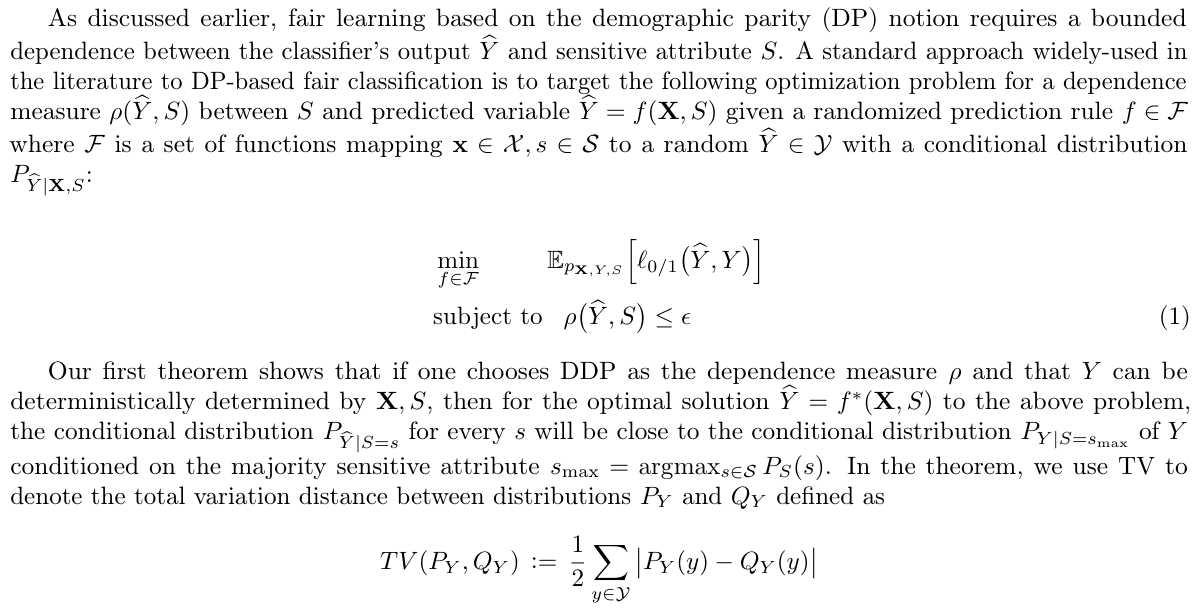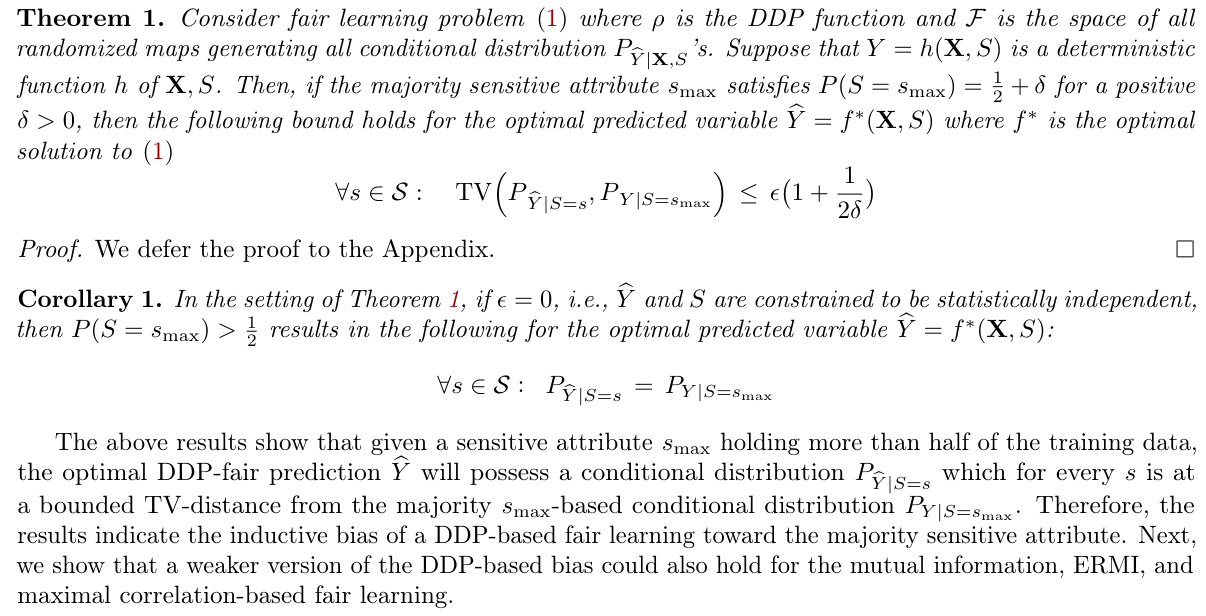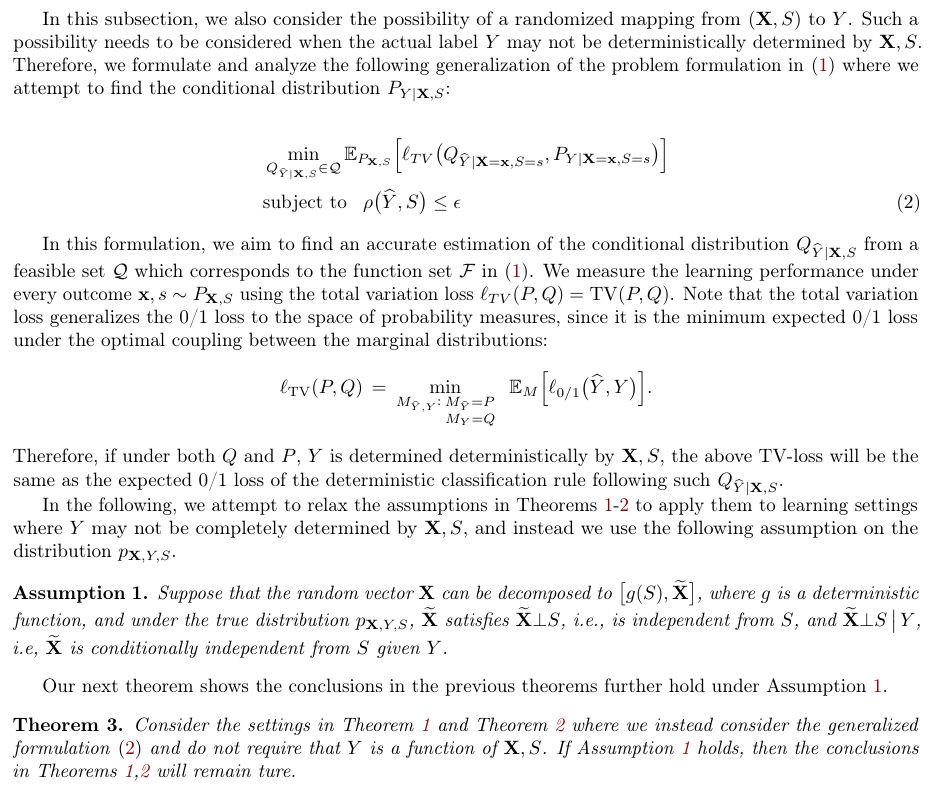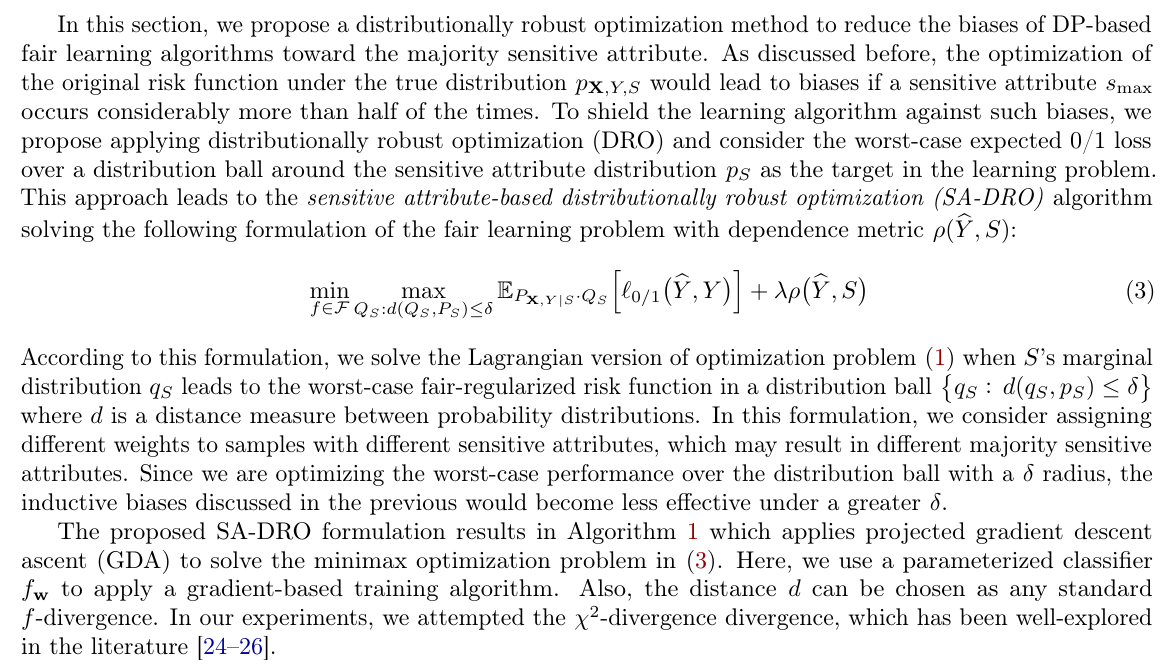Table of Links
3 Preliminaries
3.1 Fair Supervised Learning and 3.2 Fairness Criteria
3.3 Dependence Measures for Fair Supervised Learning
4 Inductive Biases of DP-based Fair Supervised Learning
4.1 Extending the Theoretical Results to Randomized Prediction Rule
5 A Distributionally Robust Optimization Approach to DP-based Fair Learning
6 Numerical Results
6.2 Inductive Biases of Models trained in DP-based Fair Learning
6.3 DP-based Fair Classification in Heterogeneous Federated Learning
Appendix B Additional Results for Image Dataset
4 Inductive Biases of DP-based Fair Supervised Learning



Proof. We defer the proof to the Appendix
We remark the difference between the bias levels shown for the DDP case in Theorem 1 and the other dependence metrics in Theorem 2. The bias level for a DDP-based fair leaner could be considerably stronger than that of mutual information, ERMI, and maximal correlation-based fair learners, as the maximum the total variations in Theorem 1 is replaced by their expected value over PS in Theorem 2.
4.1 Extending the Theoretical Results to Randomized Prediction Rule

Proof. We defer the proof to the Appendix.

5 A Distributionally Robust Optimization Approach to DP-based Fair Learning

This paper is available on arxiv under CC BY-NC-SA 4.0 DEED license.
Authors:
(1) Haoyu LEI, Department of Computer Science and Engineering, The Chinese University of Hong Kong ([email protected]);
(2) Amin Gohari, Department of Information Engineering, The Chinese University of Hong Kong ([email protected]);
(3) Farzan Farnia, Department of Computer Science and Engineering, The Chinese University of Hong Kong ([email protected]).

